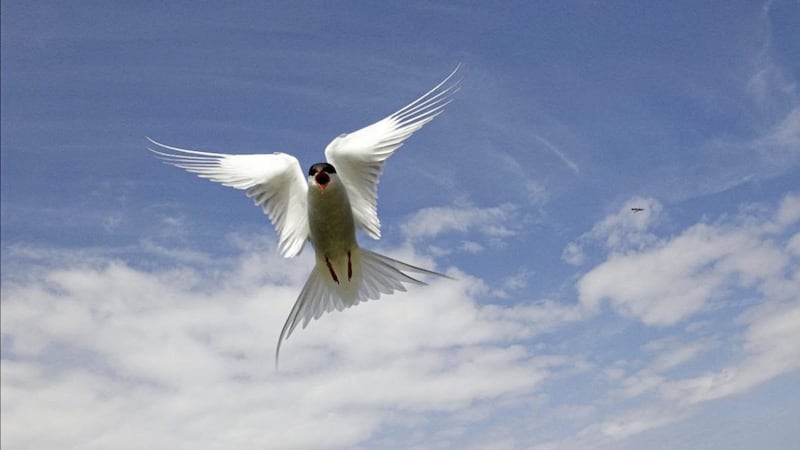RESEARCHERS are at a loss to understand where Arctic Terns have disappeared to after leaving a colony in the Irish Sea.
At this time of year, the colony on the Skerries, a group of rocky islets to the north of Anglesey in Wales, should be teeming with life.
Adult birds would typically be noisily shuttling back and forth to sea to feed their growing chicks.
The rocky islands, close to where ferries sail from Ireland to Wales, are a marine grassland environment and usually home to thousands of seabirds in the summer.
It is the largest colony of Arctic Terms in Britain and Northern Ireland - home to 2,814 breeding pairs in 2019.
The tern is an elegant species known for its record-breaking pole to pole migrations from its northern breeding grounds to Antarctica, for the southern hemisphere summer.
But in 2020, this RSPB-managed seabird sanctuary has fallen silent.
Because of the Covid-19 pandemic there are, for the first time in more than a decade, no summer wardens living on the islands and, in the absence of this human presence, Peregrine Falcons have taken up residence.
The RSPB believes that disturbance from the Peregrines is almost certainly the main cause of the desertion of the colony. But it is not known where the birds have gone.
Scientists are hoping that watchful members of the public might be able to help.
Since 2013, a team of bird ringers licensed by the British Trust for Ornithology (BTO) and supported by RSPB have been attaching individually coded leg flags to several terns.
These leg flags, which are orange with a black code for Arctic Terns and yellow with a black code for Common Terns, can be read with binoculars or a telescope. People can report their sightings and therefore help track the terns' movements.
"Terns are long-lived, and a single catastrophic year won't be the end of the Skerries story," said Dr Rachel Taylor, senior ecologist for BTO Cymru and one of the bird ringers in charge of the tern colour-marking project.
"Historic tern colony collapses and recoveries like that of Shotton Steelworks in 2009 have taught conservation managers what's needed to allow and encourage the colony to return to the Skerries in future.
"But a colony is made up of individuals, each making decisions for themselves: these colour-marked birds could give us a real insight into how those individual choices add together into colony behaviour.
"Where they go this year, and whether they survive to return and breed on the Skerries, are fascinating questions; the answers could help conservation managers keep the UK's tern colonies resilient through future environmental change."
Ian Sims, RSPB North Wales Wetlands Warden said: "It has been very saddening not to be able to give the Skerries colony the protection it needed this season, but what has happened only goes to emphasise the importance of the work that wardens do looking after this and other tern colonies up and down the country year after year."
Any sightings can be reported to sg.dodd@yahoo.com.








